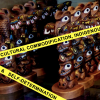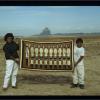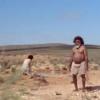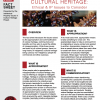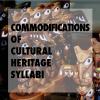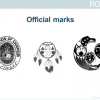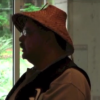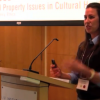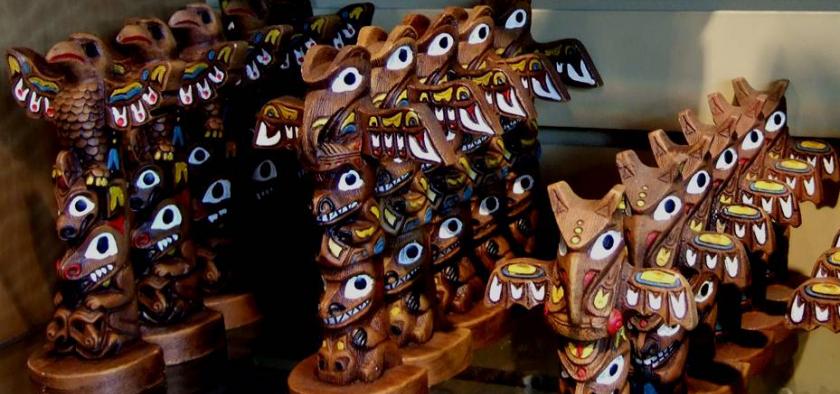
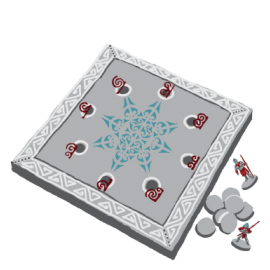
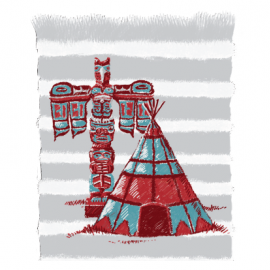
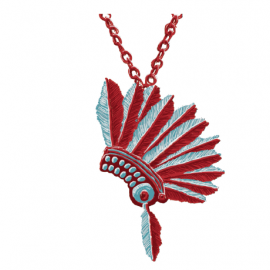
“Commodification” means transforming something into a product for commercial purposes, an item to be bought and sold in the market. Intangible cultural heritage is frequently used in the commercial sector, incorporated into company names, branding, logos, and products. Tangible cultural heritage may also be commodified, such as in the case of artworks intended to be sold commercially.
Such use is considered an appropriation when done without permission, and can cause significant cultural, spiritual, and economic harm.
Awareness of how the appropriation and commodification of cultural heritage affects Indigenous peoples is much needed—Indigenous heritage is too often viewed as “public domain,” free for the taking. What tools and strategies can Indigenous communities and scholars use to deal with appropriation and commodification concerns and opportunities?
This theme covers complex topics such as the use of Indigenous heritage expressions in the entertainment, clothing, and giftware industries; the role that government and legislation has in regulating cultural appropriation and commodification; the processes by which disempowered communities can counter appropriations; and the impact of treating cultural artifacts and human remains as commodities, whether in medical science or museums.
Photo by Solen Roth. Illustrations by Eric Simons.
|
Argillite, Faux-Argillite and Black Plastic: The Political Economy of Simulating a Quintessential Haida Substance
Journal of Material Culture, vol. 20 no. 3: 299-312.
Solen Roth
2015
|
New Proposals: Journal of Marxism and Interdisciplinary Inquiry 4(3): 60-71
Alexis Bunten
2012
|
|
Heritage Management 2.2 (pp.261-286)
George Nicholas, Catherine Bell, Kelly Bannister, Sven Ouzman, Jane Anderson
2009
|
|
Cultural Appropriation and Indigenous Patrimony
Harry Daniels Distinguished Lecture Series, University of Manitoba, Winnipeg
George Nicholas
2016
|
IPinCH Webinar, Simon Fraser University
Kathy M'Closkey
2015
|
|
IPinCH Webinar, Simon Fraser University
Solen Roth
2015
|
IPinCH Fall Gathering
Jane Anderson
2014
|
|
Cultural Commodification, Indigenous Peoples and Self-Determination Public Symposium
Nicole Aylwin
2013
|
Cultural Commodification, Indigenous Peoples and Self-Determination Public Symposium
Susan Rowley
2013
|
|
Cultural Commodification, Indigenous Peoples and Self-Determination Public Symposium
Alexis Bunten
2013
|
Cultural Commodification, Indigenous Peoples and Self-Determination Public Symposium
Kim Christen Withey
2013
|
|
Cultural Commodification, Indigenous Peoples and Self-Determination Public Symposium
Deidre Brown
2013
|
Cultural Commodification, Indigenous Peoples and Self-Determination Public Symposium
Violet Ford
2013
|
|
Cultural Commodification, Indigenous Peoples and Self-Determination Public Symposium
Maui Solomon
2013
|
Sto:lo People of the River Conference: Sharing Experience and Building Knowledge
Alexis Bunten
2013
|
|
The IPinCH Project – In Theory and Practice
Native American and Indigenous Studies Association Conference
George Nicholas
2013
|
Cultural Commodification, Indigenous Peoples & Self-Determination Public Symposium and Workshop
Alexis Bunten
2013
|
|
Cultural Commodification, Indigenous Peoples & Self-Determination Public Symposium
Deidre Brown
2013
|
Cultural Commodification, Indigenous Peoples & Self-Determination Public Symposium
Kim Christen
2013
|
|
Marks Communicating Indigenous Means of Production
Cultural Commodification, Indigenous Peoples & Self-Determination
Rosemary Coombe
2013
|
Cultural Commodification, Indigenous Peoples & Self-Determination Public Symposium
Violet Ford
2013
|
|
Drawing a Line in the Sand: Protection of the Sanilac Petroglyphs
Cultural Commodification, Indigenous Peoples & Self-Determination, Public Symposium and Workshop
Shannon Martin
2013
|
Cultural Commodification, Indigenous Peoples & Self-Determination Public Symposium
George Nicholas
2013
|
|
Beyond Collaborative Research and Exhibitions: Markets, Reproductions, and the Idea of “Collaboration”
World Archaeological Congress Intercongress (Indianapolis)
Solen Roth
2011
|
Collaboration, Communication, and Negotiation in the Age of Digital Media and Mass-Production
World Archaeological Congress Intercongress (Indianapolis)
Solen Roth (session organizer)
2011
|
|
IPinCH Midterm Conference
Solen Roth
2011
|
Not Just Their “Kitsch Mirror”: Museum Reproductions and the Native Northwest Coast Giftware Industry
American Anthropological Association Annual Meeting (New Orleans)
Solen Roth
2010
|
|
Who Owns or Has the Right to Benefit from the Past?
The Global Archaeologies Conference of Archaeology (Dublin, Ireland)
George Nicholas
2008
|
|
Posted Jan 12, 2016
|
Posted Jun 17, 2014
|
|
Posted May 15, 2014
|
|
Vanessa Udy
|
|
|
Catherine Bell
|
Violet Ford
|
|
Kim Christen Withey
|
Susan Rowley
|
|
George Nicholas
|
Victor Guerin
|
|
Victor Guerin
|
Alexis Bunten
|
|
Deidre Brown
|
Maui Solomon
|
|
Nicole Aylwin
|
Ashley Julian and Brian Noble
|
|
Solen Roth
|


